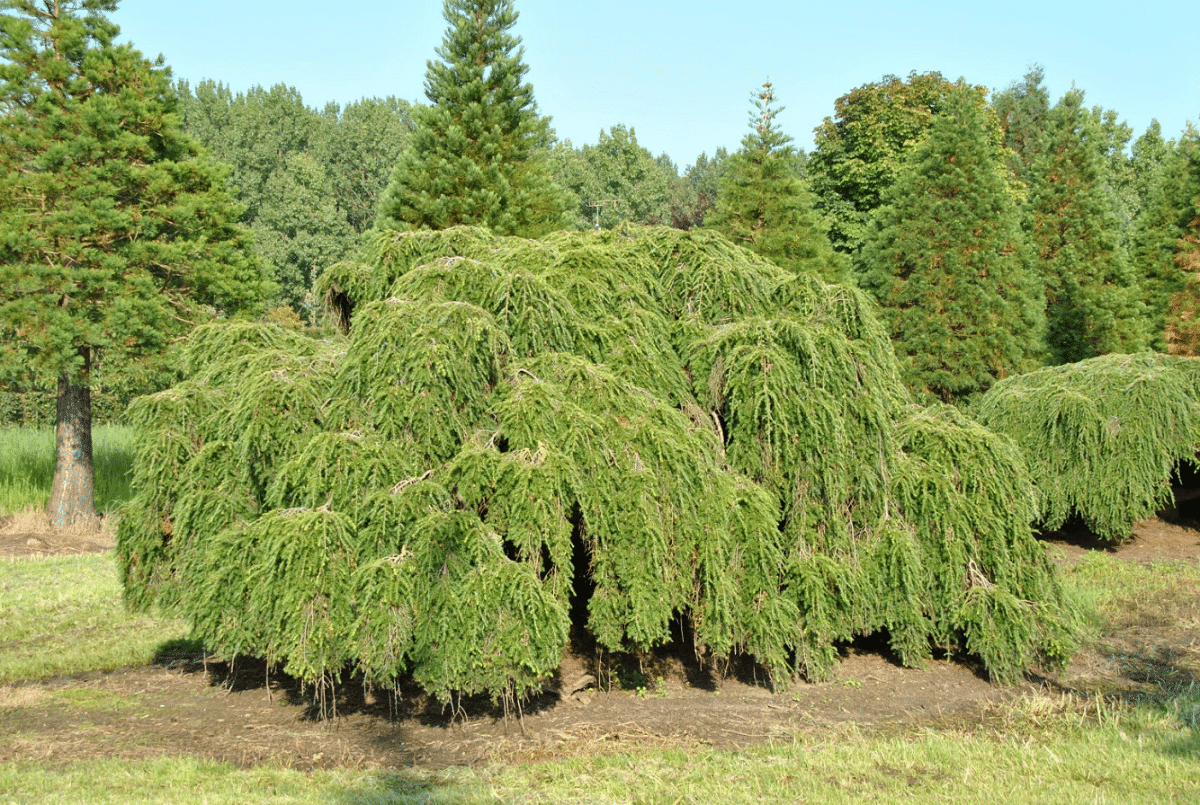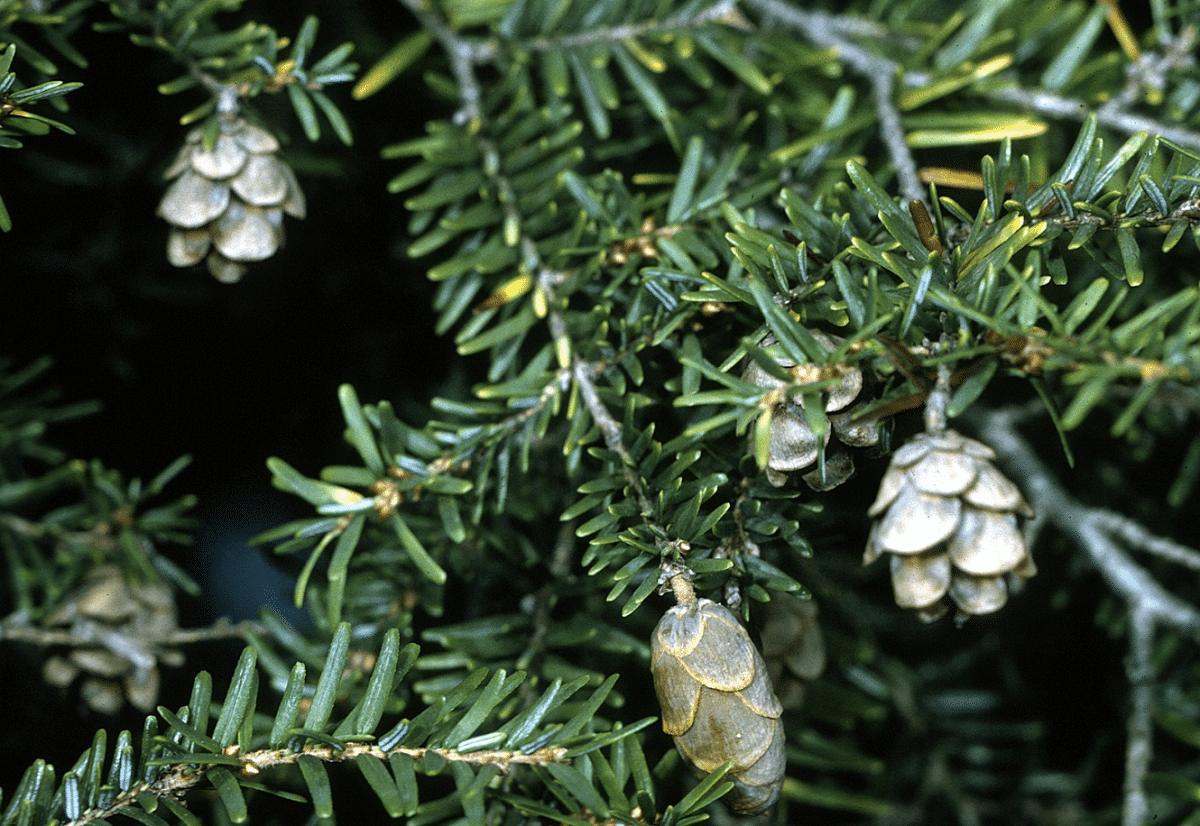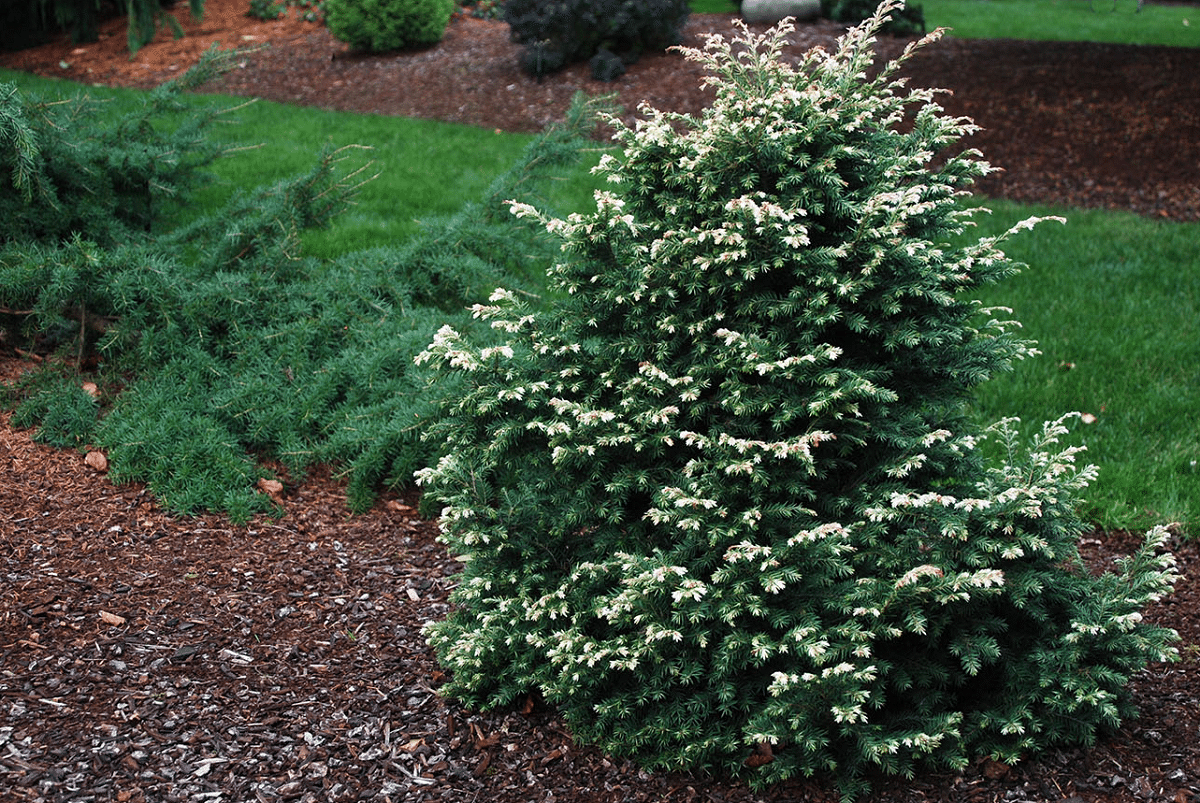
La Tsuga canadensis It is a species of tree whose height becomes so pronounced that it can easily cover an entire forest and benefit the animals that inhabit it. So for now, the desire to have this species in your garden is something difficult to carry out due to its dimensions, once it reaches its maximum growth point.
However, there is a possibility that you have a spacious lot and have in mind a good tree that is the center of attention. Luckily, this species can easily meet your expectations and if you still do not know it, we invite you to continue reading to discover information and interesting facts about this peculiar tree.
General data of the Tsuga canadensis

As you may well have deduced, tsuga canadensis is the scientific name given to this tree. Nevertheless, it is well known as Canadian hemlock or it is also called eastern hemlock.
This is one dense pyramidal conifer of the pine family that is indigenous to humid forests, wet slopes, rocky slopes / ridges, wooded ravines, and stream valleys.
So that can easily be found in eastern and southern Canada, as well as it can also be found in Maine and Wisconsin. And if you head even further south, you can see Eastern Hemlock from the Appalachian Mountains to Georgia and Alabama.
This species is known to have the smallest needles and cones of the genus. The flat jets of lacy evergreen foliage give this tree an elegant shape, but this is already a matter of features so it will be discussed in detail later.
A fact that very few people know about this species belonging to the canadensis and the family OinaceaeIs that su great height as well as the components in their sheets and their physical characteristics, manage to provide excellent coverage before winter and extreme climates.
In addition to this, red crossbills and small mammals eat the seeds, grouse eat the shoots, and white-tailed deer navigate the foliage in winter. So we can easily assure that it is an important component of thermal cover along streams for amphibians and fish.
Features

Height
Eastern hemlock it is an evergreen tree that can grow between 20 and 30 meters tall. Although when you have the plant in the wild, it easily reaches its maximum height.
Leaves
The leaves are flat with simple needles that have two with two white bands underneath they are arranged in two opposite rows. Bark is gray-brown and scaly on young trees and are between 3 and cm long.
It should be noted that needles are attached to twigs by thin stems and the small, drooping, short-stemmed, seeded cones are dark brown. The lower branches tend to lean towards the ground.
Cortex
The thick, striated bark of mature trees is reddish-brown to grayish-brown and no part of this tree is poisonous.
Development
As the tree grows old broad ridges and furrows develop. Spring is when the small, yellow, male, and small, light green female flowers ripen. The tree produces a 22mm cone that matures in the fall and is commonly used for landscaping but lacks commercial value.
Growth
Eastern hemlock grows in well-drained, average moisture soils with partial or total shade, is a natural understory tree in wild stands. Best in partial shade in locations protected from strong dry winds and hot afternoon sun.
Type of environment
Tolerates full sun in cool northern climates, but does not like hot and humid summers of the deep south. It does not tolerate drought and must be watered regularly in prolonged dry periods, particularly when the plants are young.
Flammable plant
Thus, as you are reading it, this plant has a peculiarity and that is that it is an easy species to light.
Plagues and diseases
A healthy plant in the proper environment has few problems. Potential disease problems for this tree include needle blight (needles turn yellow and die), The cancer, rusts and rot.
On the other hand, there are potential problems which include bagworms, borers, leaf miners, sawflies and the Red spider. Foliage can burn in very hot weather and a prolonged drought can be fatal to this tree.
The woolly hemlock adelgid (HWA) is a tiny sap-sucking insect (relative of aphid) that has recently become a serious threat to the survival of native hemlock in the wild in the eastern United States.
You have to know that this little insect was accidentally introduced to the United States in the 1920s and from East Asia and has been known to exist in the Pacific Northwest since 1927, but was first observed in Virginia forests in the 1950s.
The good news is that the HWA can't survive cold winters, but this does not imply that its current expansion stops. In fact, the insect is expected to eventually reach much of New England, as winter temperatures there are becoming more optimal for this animal.
Farming

You have the opportunity to place this tree either in half shade or in full shade, being better in half shade and in places protected from strong dry winds and hot afternoon sun.
It tolerates full sun in cold northern climates, but does not like hot, humid summers in the deep south, where sunburn can damage foliage when temperatures consistently exceed 35 ° C. It is intolerant to drought and should be watered regularly in prolonged dry periods, particularly when young.
For the rest and we emphasize again, you just have to be careful with this tree as it is flammable and tends to have a lot of health problems, so to speak. But if you are interested in being able to plant the Tsuga canadensis, here you have all the information you need to do it.